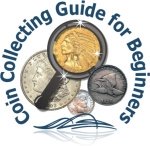 |
 |
||||||||
|
| |||||||||
What is a Counterfeit?
Question: How can I determine if a coin is a counterfeit coin or not? My Answer: In short, you probably can't determine if a coin is a counterfeit coin on your own. It takes lots and lots of knowledge and experience to spot some counterfeit coins, and sometimes even experts are fooled. That is why I advise people to start their collections with modern, inexpensive coins and work their way back to rare and more expensive coins as their knowledge increases. That is also why the advice I give throughout this site to novice and beginner collectors who are interested in the more rare and expensive coins is to only buy coins that have been certified and authenticated by reputable third party coin grading services. Counterfeit coins are not the only obstacle that novice collectors should be aware of however. You should also arm yourself with knowledge about repaired, restored and recolored coins, as well as coins that have been cleaned improperly. Alterations are also something to be aware of. Unscrupulous people have been known to alter coins by adding, removing or changing a design feature in an attempt to make a quick buck. For example, adding or removing a mint mark or changing a date on certain rare coins can mean the difference in value of thousands or dollars. With all that said, here is my answer on how to protect yourself - knowledge. If you are interested in collecting rare and expensive coins,
Just remember - if it sounds too good to be true, it probably is. If someone offers to sell you a coin that you know is worth $100 for $50, there is probably something wrong with it.
|
|||||||||
|
|
|||||||||
|
Return to Coin Collecting Guide for Beginners Home
Or Choose a New Topic to Explore From the Menu on the Left Copyright©
2008-2009 coin-collecting-guide-for-beginners.com
Template Design |
|||||||||
